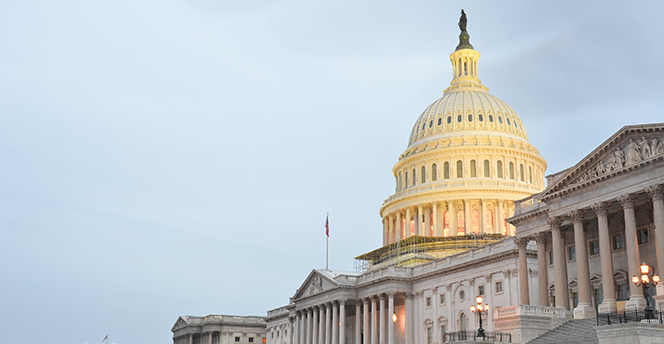S. 858 – Energy Savings Through Public-Private Partnerships Act of 2015

S. 858 – Energy Savings Through Public-Private Partnerships Act of 2015
The Energy Savings Through Public-Private Partnerships Act of 2015 (S. 858) was introduced in the U.S. Senate by Sen. Cory Gardner (R-Colo.) on March 25, 2015. It was co-sponsored by Sen. Jeanne Shaheen (D-N.H.), Sen. Chris Coons (D-Del.), and Sen. Rob Portman (R-Ohio). Sen. Shaheen is the Alliance Honorary Chair, and Sen. Coons and Sen. Portman are Alliance Honorary Vice-Chairs. Most recently, these provisions were included in Section 1006 of S. 2012, the Senate’s comprehensive energy bill. A similar version of the bill was re-introduced in the U.S. House of Representatives (H.R. 1629) by Rep. Adam Kinzinger (R-Ill.) on March 25, 2015, after being originally introduced in July 2013 (H.R. 2689). It was co-sponsored by Rep. Peter Welch (D-Vt.) and two other representatives. Both Rep. Kinzinger and Rep. Welch are Alliance Honorary Board Members.
Summary
This bill would amend the National Energy Conservation Policy Act to promote contracts between federal agencies and private contractors to increase energy efficiency upgrades in federal facilities. The Secretary of Energy would have to assess the status of each agency’s energy savings performance and utility energy service contracts, the investment value of such contracts, the comparison between guaranteed and actual energy savings for the previous year, and the plan for entering into such contracts in the coming year.
Key Provisions
Energy conservation measures would be expanded to include energy consuming devices and required support structures. Agencies would have to accurately report the operation and maintenance savings associated with modernizing or replacing systems with energy or water conservation measures. Agencies would be able to transfer or sell energy savings and apply the proceeds to fund a new performance contract. In addition, there would be two new additions to define energy savings:
- The use, sale, or transfer of energy incentives, rebates, or credits from federal, state, or local governments or utilities.
- Any revenue generated from a reduction in energy or water use, from more efficient waste recycling, or from additional energy generated due to more efficient equipment.
STAY EMPOWERED
Help the Alliance advocate for policies to use energy more efficiently – supporting job creation, reduced emissions, and lower costs. Contact your member of Congress.
Energy efficiency is smart, nonpartisan, and practical. So are we. Our strength comes from an unparalleled group of Alliance Associates working collaboratively under the Alliance umbrella to pave the way for energy efficiency gains.
The power of efficiency is in your hands. Supporting the Alliance means supporting a vision for using energy more productively to achieve economic growth, a cleaner environment, and greater energy security, affordability, and reliability.



